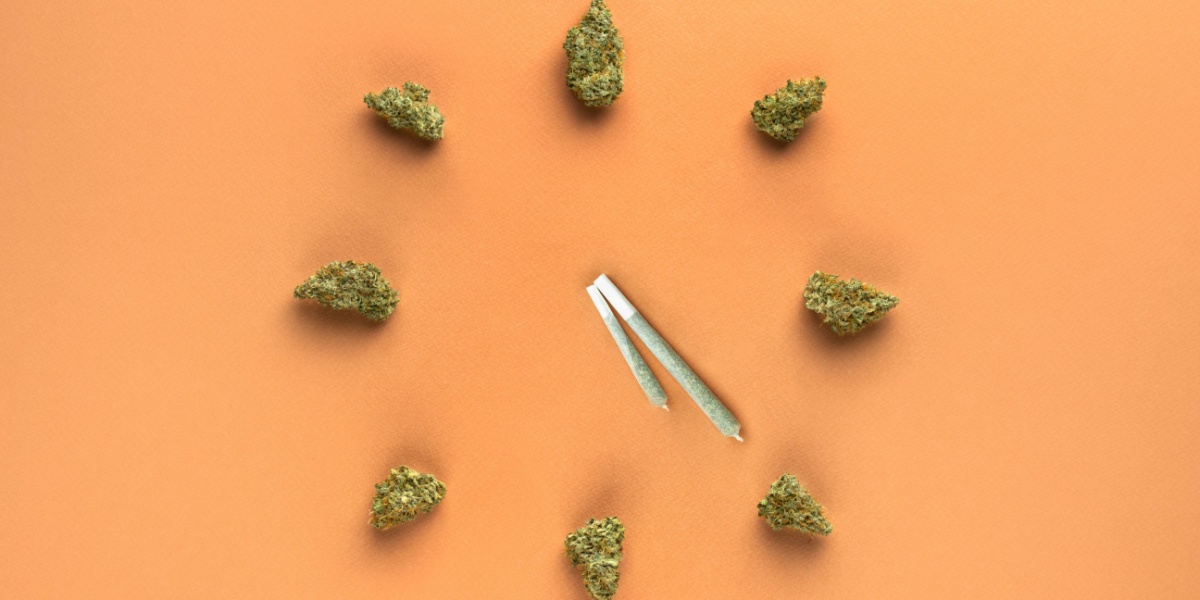THCa is a non-psychoactive precursor to THC. With the increasing prevalence of alternatives to THC making their way to the market, the question of whether or not THCa shows up on drug tests has become a popular topic. This can be a somewhat gray area because it depends on how the user consumes THCa.
In this article, we will explore the different ways of consuming THCa, THCa absorption, and metabolism, detection times of THCa on drug tests, factors that can affect the detection window of THCa, THCa false-positives on drug screens, and the risks of attempting to flush THCa too quickly.
- THCa is a precursor to THC that remains non-psychoactive unless exposed to heat, which converts it into THC and makes it detectable in drug tests.
- THCa detection depends on factors such as consumption method, metabolism, dosage, and hydration. It can be present in the bloodstream for up to 24 hours.
- Standard drug tests do not screen for THCa, but if converted to THC through heating, it can be detected in urine, blood, saliva, and hair follicle tests.

THCa absorption and metabolization
Understanding how THCa is absorbed and metabolized is crucial for determining its effects and bioavailability. Different administration methods, such as oral and sublingual, impact how efficiently THCa enters the bloodstream and influence its therapeutic potential.
When THCa is exposed to heat through smoking, vaping, or cooking, it is converted into THC, the compound found in cannabis that produces psychoactive effects. [1]
Oral
THCa can be ingested orally through raw cannabis in the form of juices, smoothies, and salads. When THCa is administered orally, it must first undergo digestion in the gastrointestinal tract and be metabolized by the liver before it reaches the bloodstream. Therefore, with oral administration, THCa will have the lowest bioavailability and require the longest time for effects to be obtained.
Bioavailability is a term used to describe the percentage of a drug that when administered, makes it into the bloodstream to provide the desired effects. It has been suggested that consuming THCa with fatty meals or adding oils during intake can increase bioavailability. [2]
Sublingual
Although absorption and metabolism of THCa through sublingual administration have not been well established in humans, animal studies show that sublingual administration increases both the absorption rate and bioavailability of THCa compared to oral intake. [3] This is due to sublingual administration avoiding initial digestion in the digestive system and bypassing early breakdown by the liver.
Therefore, sublingual THCa will have a quicker onset and higher bioavailability compared to oral administration. [3]
How long does THCa stay in your body?
According to a 2018 study, following consumption of THCa, it can be detectable in blood within 30 minutes of use and can remain in your bloodstream for up to 24 hours. This is true for both water-based and oil-based THCa products. [2]
Does THCa show up in drug testing?
Most standard drug tests including urine, blood, saliva, and hair do not screen for THCa directly. Instead, they detect THC metabolites, primarily 11-nor-9-carboxy-delta9-tetrahydrocannabinol (THC-COOH). [5]
However, depending on how THCa is consumed, it may be converted into THC. Since THCa is a precursor to THC, it does not inherently produce psychoactive effects unless it undergoes decarboxylation, which is a process triggered by heat. When products containing THCa are smoked, vaped, or cooked, THCa converts into THC, which can then be metabolized and detected on drug tests. [1]
Detection times for THCa depend on the type of test and usage patterns.
- Urine tests: Detect cannabis for 3-7 days in occasional users and >30 days in chronic users. [6]
- Blood tests: Best for detecting recent use from 3-5 hours up to 2 days. [7]
- Saliva tests: Detect recent use from 1 hour up to 3 days.
- Hair follicle tests: Detect long-term use from 7-10 days up to 90 days or longer. [8]
Overall if you have a drug test coming up, it is best to consult a medical professional or consider lab-tested products with clear cannabinoid profiles.
Can breath tests detect THCa?
Breath tests for cannabis are designed to detect the presence of THC rather than THCa. However, if THCa is converted into THC through heating, it can be detected with a breath test.
Depending on the type of THCa product used and how it is consumed will determine whether it will give a positive result on a breath test.
THCa products that are heated through smoking, vaping, or cooking will convert to THC, and once THC is inhaled, it can be detected in a breath test for .5 to 3 hours. [9]
If someone consumes raw cannabis such as in juices or salads, they are ingesting THCa which does not get metabolized to THC unless exposed to heat. Because breath tests specifically screen for THC, consuming raw THCa should not trigger a positive breath test. [10]
What factors affect the detection window of THCa?
Several factors affect the detection window of THCa. These include the method of consumption, frequency of use and dosage, an individual's metabolism and physiology, and hydration and detoxification.
- Method of consumption: If THCa is heated, it will convert to THC, which significantly increases its detectability window in drug tests. Edible and sublingual forms of THCa can have varied absorption rates, which can potentially influence the detection window based on the digestive process.
- Frequency of use and dosage: Chronic users of THCa taking higher doses will have a longer window of detection. Single-use and occasional users and those who take lower doses will have a shorter window of detection.
- Individual metabolism and physiology: Individuals with a faster metabolism may process and eliminate THCa more quickly. Body fat percentage also plays a role in THCa metabolism and elimination. Since THC is lipophilic, it may linger in fat tissue, causing it to have an extended window of detection in those with a higher body fat percentage. [1][10]
- Hydration and detoxification: The amount of water an individual consumes and their hydration status can impact how quickly the body eliminates cannabinoids with a higher fluid intake leading to quicker elimination. Diet and exercise can also affect the removal of THCa metabolites from the body. Regular physical activity and a balanced diet can contribute to the faster elimination of these metabolites.
THCa false-positive results?
Although rare, the possibility of a THCa false-positive drug screen may occur.
- Medication: Certain over-the-counter or prescription medications may produce a false-positive result on a drug screen. These include NSAIDs like ibuprofen and naproxen, proton pump inhibitors, and Efavirenz. [11]
- Passive inhalation: Studies have shown that even passive inhalation of second-hand smoke from someone using THCa can produce a positive drug screen, as the inhaled form would be THC due to heating.
- Food: Foods containing hemp seed oil have been shown to produce false-positive results on drug screens.
The risks of attempting to flush THCa from the system quickly
Detox products to rapidly flush THCa from the body can lead to dangerous physiologic outcomes. These include dehydration, electrolyte imbalances, kidney damage, and psychological and neurologic damage. There is limited clinical evidence to support the effectiveness of detox drinks or diets in humans. However, studies have demonstrated that these diets may cause more harm than good. [12]
Before consuming any detox products be sure to consult with your medical provider.
Final thoughts
If you are concerned about drug testing, it is best to consult with a medical professional or consider lab-tested products with clear cannabinoid profiles.
The only way to guarantee a negative drug screen is complete abstinence from THCa and THC products.



_-Origins,-Effects,-and-Risks-guide-detail.jpg?v=1741613914)
_-Effects,-Benefits,-and-Risks-guide-detail.jpg?v=1741683488)